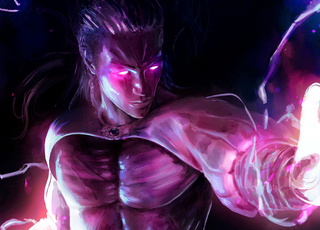REPORT: Attractiveness of Video Game Heroes and Heroines, Pt. 1
- June 3, 2020
- Michał Dębek
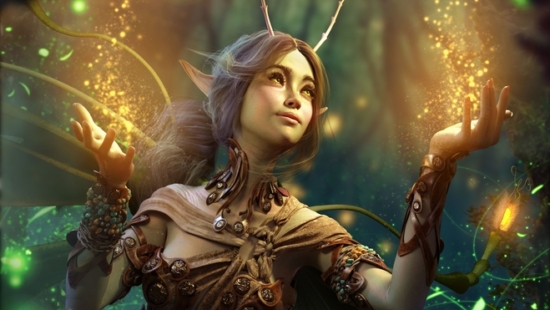
“Don’t judge a book by its cover” is a common saying, yet as humans, we often judge by looks—even when it comes to video game characters. At Try Evidence, we explored how players perceive the attractiveness of virtual heroes and heroines. We gathered insights from players to see which video game characters they considered the most attractive.
How We Conducted Our Research
For this study, we selected 60 of the most iconic video game characters and surveyed 100 gaming enthusiasts to rate the attractiveness of such heroes and heroines. Our goal was to answer key questions such as:
- What features of video game characters catch attention the most?
- What traits make heroes and heroines attractive to players?
- Are there any characters that come close to the “perfect” ideal?
- Which popular characters are considered particularly attractive or unattractive?
- Do men and women have similar preferences when it comes to the attractiveness of male and female characters?
This report highlights players’ opinions on the perceived attractiveness of these video game heroes and heroines.
In the second part of the report (read here), we compare these opinions to respondents’ psychophysiological responses while watching game trailers.
What Makes a Hero?
The Tradition of Heroic Characters
The tradition of storytelling centered around heroic characters is as old as human culture itself and the ability to create narratives. Anthropologists have recognized this as a universal cultural phenomenon that helped unite ancient communities. Today, psychologists emphasize that heroes are the building blocks in shaping our imagination and mental health.
The word “hero” originates from the Greek term for “protector,” and in ancient Greek mythology, heroes were often viewed as demigods possessing superhuman strength and beauty. Traditionally, heroes were morally flawless figures who sacrificed themselves for the greater good. Based on this definition, characters like John Marston from Red Dead Redemption (Rockstar Games), Garrett from Thief (Eidos-Montréal), or Harley Quinn from Batman series (Rocksteady Studios) wouldn’t fit the traditional heroic mold. However, characters closer to this ideal might include Faith from Mirror’s Edge (DICE), Nariko from Heavenly Sword (Ninja Theory), Geralt of Rivia from the Witcher series (CD Project Red), and Joel Miller from The Last of Us (Naughty Dog).
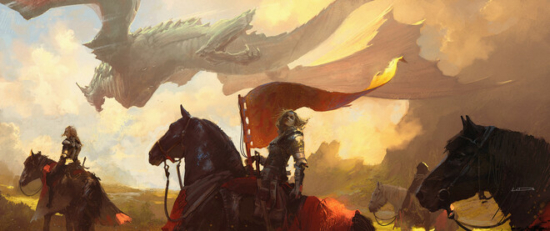
Modern Perceptions of Heroes
Modern psychologists haven’t agreed on a single definition of heroism, and there’s still no universally accepted set of traits that define a hero.
“(…) in psychological research people have not always considered flawless morality or the seemingly obvious sacrifice for others as the universal traits of heroes.”
In fact, “ordinary people” seem to have a different view. For example, studies show that American children tend to see heroes as active, beautiful, brave, confident, strong, and often well-dressed or wealthy. Older individuals may define heroes as the best version of themselves—someone who embodies their ideal traits. Today, it seems that a hero can be anyone impressive or admirable, regardless of their moral compass.
How Do We See Heroes?
Social judgments often revolve around two key dimensions: competence and warmth. These shape how individuals are perceived in both social and professional contexts.
Competence reflects an individual’s ability to perform effectively and achieve goals, while warmth encompasses traits like kindness, trustworthiness, and friendliness. Research consistently highlights the importance of these dimensions in shaping social perceptions and interpersonal attraction. Notably, perceptions of competence can enhance attraction, which, in turn, positively influences how warmth is perceived. In essence, individuals seen as highly competent are often viewed more favorably overall, as their perceived warmth increases alongside their competence.
This, however, is not enough. Traits like strength, intelligence, and talent—qualities that reflect competence—are important, but they don’t guarantee that every modern hero needs to be helpful, trustworthy, or kind, traits typically associated with warmth.
In video games, we often encounter “martial heroes”—specialized figures trained for combat against evil forces to protect a community or even the world. These heroes are expected to be brave, physically strong, resilient, and combative. Honesty is a desirable trait as well, but it’s not always essential. These qualities are admired in both male and female heroes.
Appearance also plays a role in defining a hero. Research suggests that heroes usually look extraordinary—”bigger” and “richer” than the average person. They are not necessarily taller or wealthier, but they exude an aura of greatness, often conveyed through elements like imposing armor or opulent attire. This visual distinction reinforces their status, leaving ordinary individuals awed by their “superiority.”
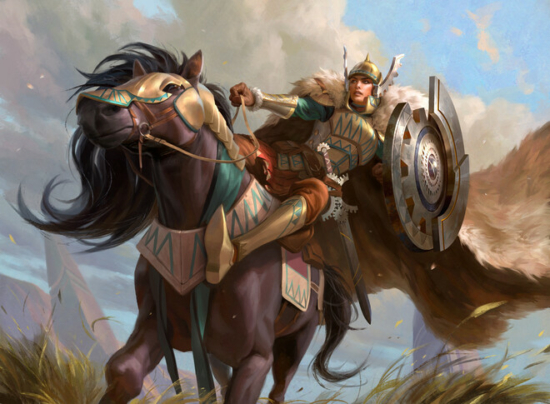
The Attractiveness of Heroes
Physical Attractiveness in Women
Evolutionary psychologists suggest that an attractive woman typically displays the following traits:
- Youthfulness,
- Signs of fertility, such as full lips, clear skin, bright eyes, and shiny hair,
- Expressiveness,
- Vitality,
- Symmetry in both face and body.
In many cultures, an attractive woman is also associated with having a fuller bust and an ideal waist-to-hip ratio (WHR), typically between 0.67 and 0.80. Signs of aging or illness are often seen as reducing the evolutionary appeal of women.
Interestingly, for men, a woman’s physical appearance plays a more significant role in overall attractiveness than the physical appearance of men does for women. This emphasis on physical attractiveness has been closely tied to the rise of consumerism, particularly in industries like fashion, cosmetics, and advertising.
Physical Attractiveness in Men
According to evolutionary psychologists, an attractive man typically:
- Is wealthy (or has the potential to be),
- Holds a high social status,
- Is older than the woman (implying more experience, stability, and trustworthiness),
- Demonstrates industriousness or initiative,
- Is tall, with a V-shaped torso,
- Has a symmetrical appearance,
- Often has a square jaw and a deep voice.
Survival of the Prettiest?
According to research by Nancy Etcoff, “beauty is a universal part of human experience, and that it provokes pleasure, rivets attention“. She argues that our sensitivity to beauty is innate, passed down through generations as a result of natural selection. Moreover, beauty is often seen as a marker of status—a quality that, as noted earlier, is essential for heroes to embody. Historically, ugliness was associated with evil, madness, or danger—the very opposite of heroism.
At Try Evidence, we based our study on the idea that if humans are inherently attuned to beauty, then video game heroes and heroines with more attractive features should be rated more favorably.
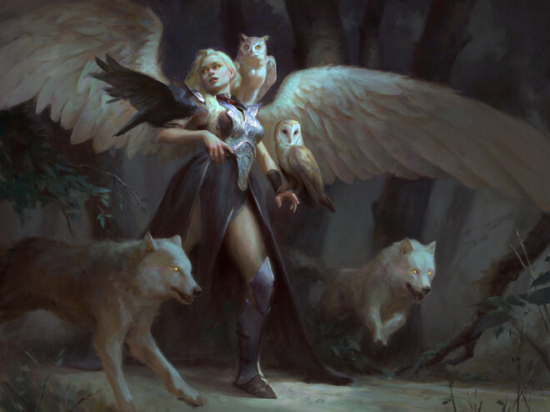
Player Rankings of Video Game Character Attractiveness
Research Method
In the first part of our research, we showed pictures of various heroes and heroines to over 100 people aged 18–56 and asked them to rate their overall attractiveness. The selection included 60 characters from popular video games, featuring a mix of protagonists with different looks and personalities.
Next, 10 participants gave more detailed feedback on what made certain “ideal” heroes and heroines attractive. Finally, we brought in 30 more people to watch characters in action—through gameplay or trailers—while we tracked their physical and emotional reactions to the most and least attractive characters.
Attractiveness of Male Heroes
Top-Rated Heroes
Among 100 Players
- Geralt of Rivia (The Witcher 3: Wild Hunt, CD Project Red),
- Ezio Auditore (Assassin’s Creed II, Ubisoft Montréal),
- Nathan Drake (Uncharted: Legacy of Thieves Collection, Naughty Dog).

There were some differences between men’s and women’s picks when it comes to appealing in video game characters. Women favored Ezio Auditore, Nathan Drake, and Leon Kennedy (Resident Evil series, Capcom)—characters who can be deemed as charming and attractive.
Men leaned toward Geralt of Rivia and Dante (Devil May Cry series, Ninja Theory), who have a more rugged and edgy vibe, along with Leon Kennedy, who appealed to both groups.
Leon’s inclusion on both lists suggests he has qualities that resonate across genders.
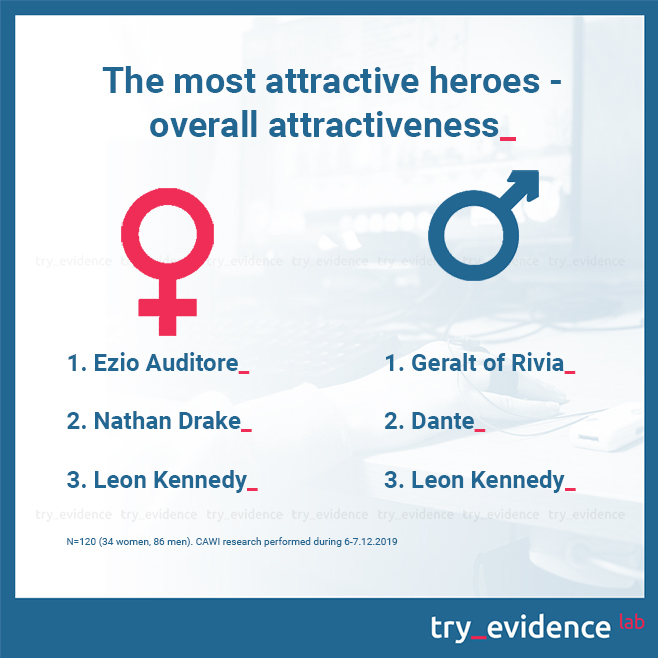
In the Detailed Study
Ezio Auditore was rated highest for overall attractiveness, while Geralt was seen by the players as the “most sexy” character.

In the detailed study, the preferences of women and men were more similar than in the 100-player group. Both genders agreed that Ezio and Geralt were the most attractive, but men chose Agent 47, while women picked Joel Miller.
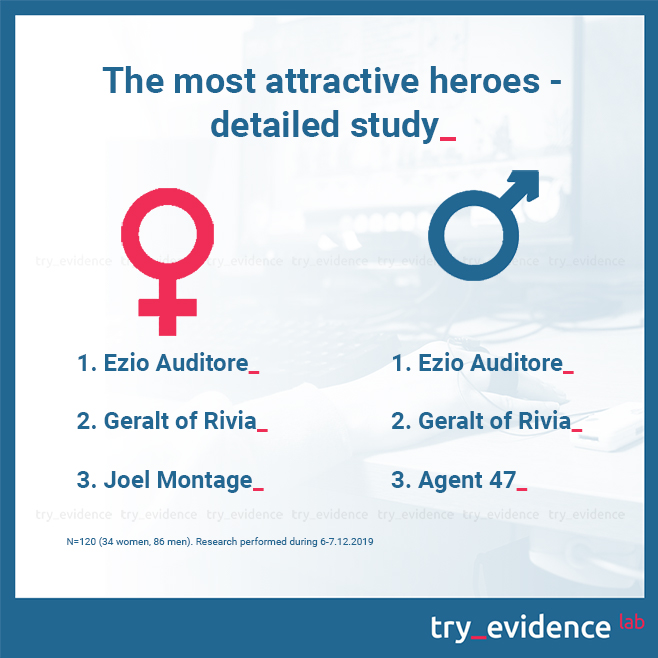
Lowest-Rated Heroes
Among 100 Players
- Zhin (Paladins: Champions of the Realm, Hi-Rez Studios),
- Lee Chaolan (Tekken series, Bandai Namco Entertainment),
- Agent 47 (Hitman series).
Women’s Picks (Tied)
- Jax (League of Legends, Riot Games),
- Zhin,
- Rakan (League of Legends),
- Lucian (League of Legends).
Men’s Picks
- Marshall Law (Tekken series),
- Rakan (League of Legends),
- Lucian (League of Legends).
In the Detailed Study
Lucian was rated as completely unattractive, while Joel Miller was considered the least sexy.
Women’s Picks
- Agent 47,
- Zhin,
- Lucian.
Men’s Picks
- Joel Miller,
- Zhin,
- Lucian.
Attractiveness of Female Heroes
Top-Rated Heroes
Among 100 Players
- Christie Monteiro (Tekken series),
- Lara Croft (Tomb Raider),
- Faith Connors (Mirror’s Edge, DICE).

Both women and men selected Lara Croft and Nariko (Heavenly Sword) as top choices.
Women preferred Ada Wong (Resident Evil series), who is known for her mysterious and graceful demeanor, suggesting that women may be drawn to characters with a combination of sophistication and strength.
Men, on the other hand, favored Christie Monteiro, a character with a more overtly confident and physically striking presence.
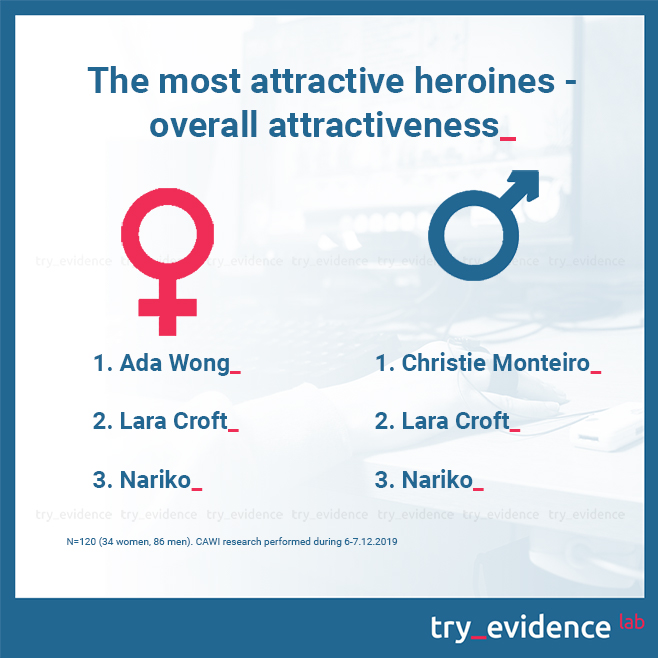
In the Detailed Study
Lara Croft was rated as the most attractive. Christie Monteiro, on the other hand, was considered the sexiest.

The overlap among both genders in the selection of Lara Croft shows a shared admiration for her. However, the differences in the other picks—Faith Connors versus Christie Monteiro and Mila (Dead or Alive series, Team Ninja) versus Kokoro (Dead or Alive series)—suggest that women may favor characters with more grounded, independent traits, while men tend to prefer characters who emphasize physical confidence and grace with a more sensual edge.
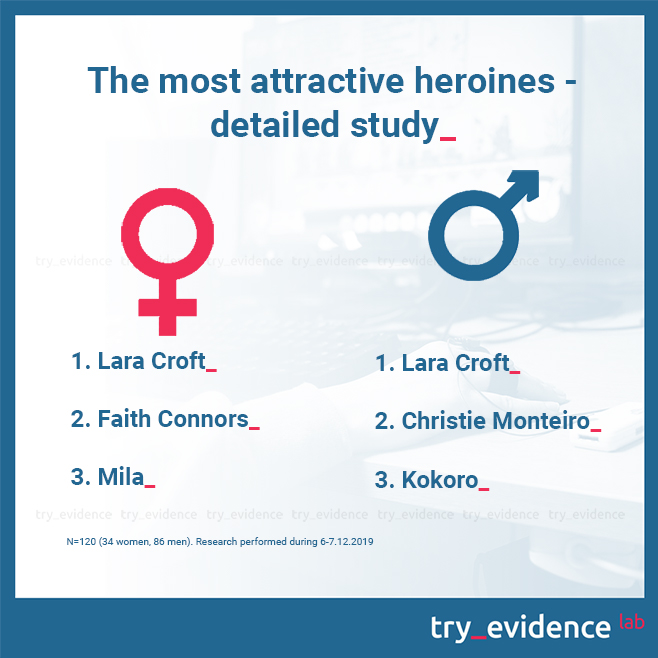
Lowest-Rated Heroines
Among 100 Players
- Kokoro,
- Mila,
- Juri Han (Street Fighter series, Capcom).
Women’s Picks
- Juri Han,
- Skarlet (Mortal Kombat series, NetherRealm Studios),
- Christie Monteiro (highly rated by men).
Men’s Picks
- Juri Han,
- Skarlet,
- Mila (women’s favorite heroine).
Both women and men selected Juri Han and Skarlet as their least attractive picks.
Christie Monteiro, while rated highly by men, appears on the list of least attractive characters for women. On the other hand, Mila, a favorite among women, is seen as unattractive by men.
In the Detailed Study
Juri Han was rated as the least attractive. Mila, on the other hand, was considered the least sexy.
Women’s Picks
- Juri Han,
- Kokoro,
- Christie Monteiro (highly rated by men).
Men’s Picks
- Juri Han,
- Mila (highly rated by women),
- Faith Connors (highly rated by women).
Does an Attractive Hero Make You Play More?
The results of our study are not entirely conclusive. For four female characters (Christie, Lara Croft, Juri, and Kokoro), we found a noticeable correlation between how attractive players found them and how willing they were to engage with the game. The more attractive the character seemed, the more likely players were to express interest in playing the game.
Interestingly, Christie was rated as less attractive by people who had played Tekken, where she is one of the main characters. Her beauty was more appreciated by those who had never played the game. The results for Kokoro were different, even though she’s also a fighting game heroine. People who expressed interest in playing Dead or Alive rated Kokoro as more attractive. However, Kokoro ended up being the least preferred character overall in our study.
Geralt of Rivia turned out to be the most preferred hero, though this didn’t necessarily match his attractiveness ratings. For Geralt, there was the smallest gap in responses—most participants expressed interest in playing The Witcher.
Geralt’s results were particularly interesting when compared to Lara Croft. While Lara was the second-most preferred character, her attractiveness rating had a stronger connection to players’ willingness to engage with the game. Notably, opinions on Lara were the most varied, showing that not everyone was eager to play as her.
***
It seems that players’ familiarity with a character’s mechanics and abilities within the game plays an important role in how they assess the character’s attractiveness. Prior experience with the game influences how players view the heroes, and as you might expect, this impact isn’t always positive.





